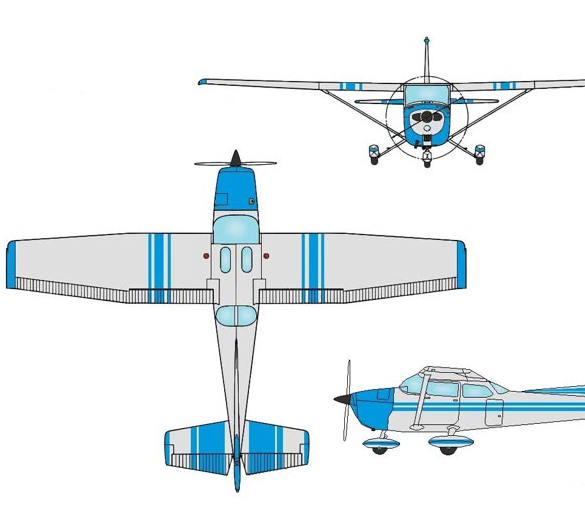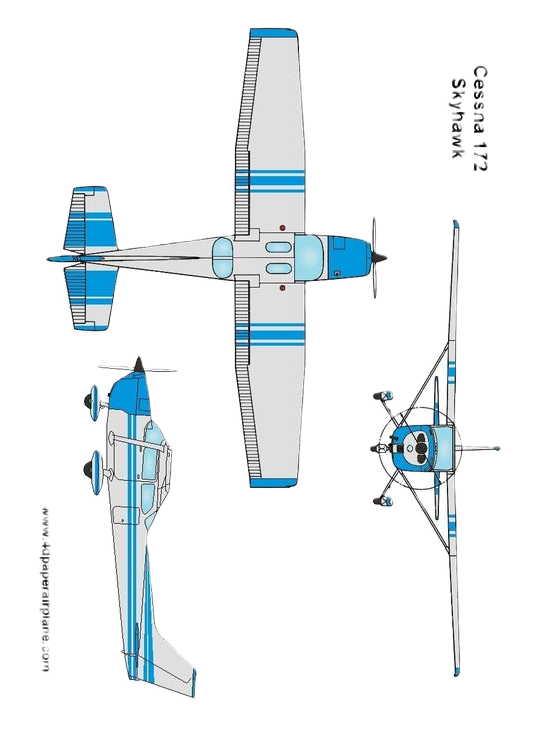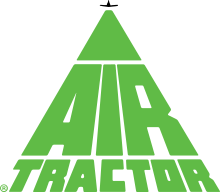Reims/Cessna
172 Skyhawk
 |
|
| General information | |
|---|---|
| Type | Civil utility aircraft |
| National origin | United States |
| Manufacturer | Cessna Textron Aviation |
| Status | In production |
| Number built | 44,000+ |
| History | |
| Manufactured | 1956–1986, 1996–present |
| Introduction date | 1956 |
| First flight | June 12, 1955 |
| Developed from | Cessna 170 |
| Variants | Cessna T-41 Mescalero |
| Developed into | Cessna 175 Skylark |
.
History Cessna Aircraft Company
Reims/Cessna 172 Skyhawk Manufactured 1956–1986, 1996–present
Introduction date 1956, First flight June 12, 1955

The Cessna 172 Skyhawk is an American four-seat, single-engine, high wing, fixed-wing aircraft made by the Cessna Aircraft Company. First flown in 1955, more 172s have been built than any other aircraft. It was developed from the 1948 Cessna 170 but with tricycle landing gear rather than conventional landing gear. The Skyhawk name was originally used for a trim package, but was later applied to all standard-production 172 aircraft, while some upgraded versions were marketed as the Cutlass.
Measured by its longevity and popularity, the Cessna 172 is the most successful aircraft in history. Cessna delivered the first production model in 1956, and as of 2015, the company and its partners had built more than 44,000 units. The aircraft remains in production today.
A general aviation airplane, the Skyhawk's main competitors have been the Beechcraft Musketeer and Grumman AA-5 series (neither currently in production), the Piper Cherokee, and, more recently, the Diamond DA40 and Cirrus SR20..
Design


The Cessna 172 started life as a tricycle landing gear variant of the taildragger Cessna 170, with a basic level of standard equipment. In January 1955, Cessna flew an improved variant of the Cessna 170, a Continental O-300-A-powered Cessna 170C with larger elevators and a more angular tailfin. Although the variant was tested and certified, Cessna decided to modify it with a tricycle landing gear, and the modified Cessna 170C flew again on June 12, 1955. To reduce the time and cost of certification, the type was added to the Cessna 170 type certificate as the Model 172. Later, the 172 was given its own type certificate. The 172 became an overnight sales success, and over 1,400 were built in 1956, its first full year of production
0
KmCeiling
0
KmCombat RANGE
0
Km/hAircraft Speed
0
Max Crew
Photo Gallery
Cessna Aircraft Company
Reims/Cessna 172 Skyhawk


Cessna Aircraft Company
Reims/Cessna 172 Skyhawk
General Info
-
-
- Crew: one
- Capacity: three passengers
- Length: 27 ft 2 in (8.28 m)
- Wingspan: 36 ft 1 in (11.00 m)
- Height: 8 ft 11 in (2.72 m)
- Wing area: 174 sq ft (16.2 m2)
-
Powerplant
-
- Empty weight: (767 kg)
- Gross weight: (1,111 kg)
- Fuel capacity: (212 litres)
- Powerplant: 1 × Lycoming IO-360-L2A four cylinder, horizontally opposed aircraft engine, 160 hp (120 kW)
- Propellers: 2-bladed metal, fixed pitch
-
Performance
- Cruise speed: 226 km/h
- Stall speed: (54 mph, 87 km/h) (power off, flaps down)
- Never exceed speed: 302 km/h) (IAS)
- Range: 696 nmi (801 mi, 1,289 km) with 45 minute reserve, 55% power, at 12,000 feet (3,700 m)
- Service ceiling:(4,100 m)
- Rate of climb: 721 ft/min
Related development
Links to Youtube & Others
From December 4, 1958, to February 7, 1959, Robert Timm and John Cook set the world record for (refueled) flight endurance in a used Cessna 172, registration number N9172B. They took off from McCarran Field (now Harry Reid International Airport) in Las Vegas, Nevada, and landed back at McCarran Field after 64 days, 22 hours, 19 minutes and 5 seconds in a flight covering an estimated 150,000 miles (240,000 km), over 6 times further than flying around the world at the equator. The flight was part of a fund-raising effort for the Damon Runyon Cancer Fund. The aircraft is now on display at the airport.
Reims/Cessna 172 Skyhawk
Development of the type continue and in 1935 the Bf 108B appeared with the fin and rudder having undergone modifications.
Youtube Link
Model introduced in July 2014 for 2015 customer deliveries, powered by a 155 hp (116 kW) Continental CD-155 diesel engine installed by the factory under a supplemental type certificate.












